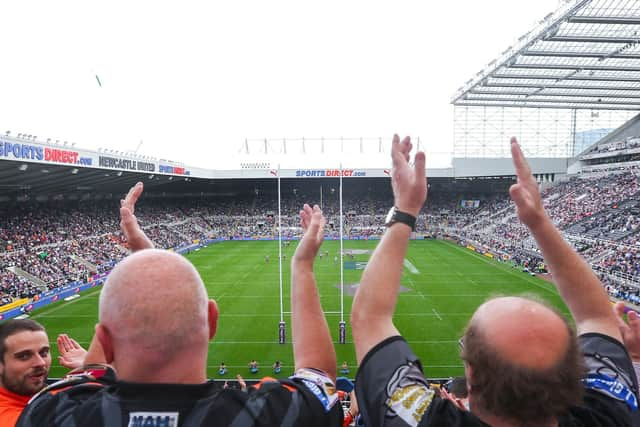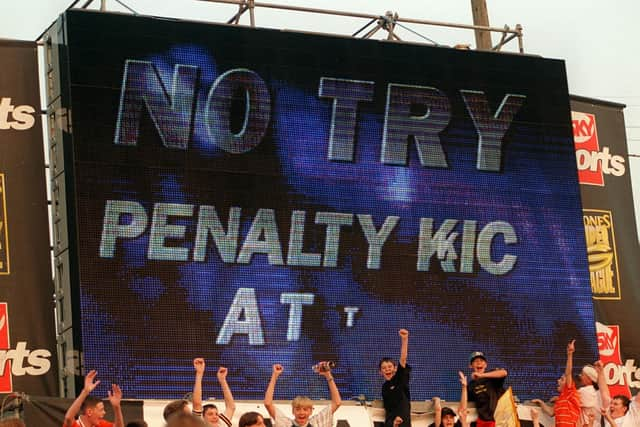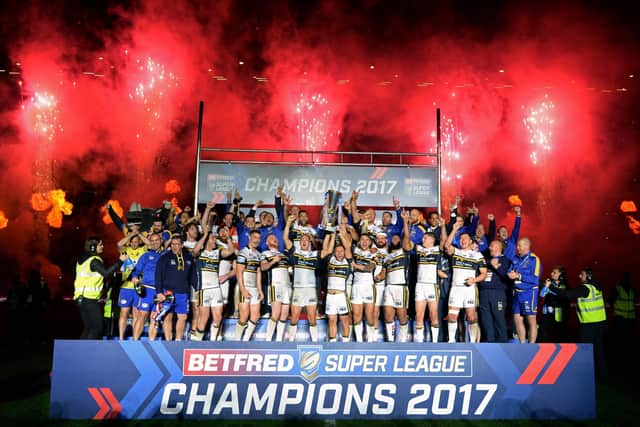The hits and misses of rugby league rule changes – Peter Smith
and live on Freeview channel 276
Scrums have been abolished, for the rest of this year at least, on health grounds in an attempt to limit the possible spread of Covid-19.
Play will be restarted with a tap following a kick direct into touch or after the ball hits a trainer or the referee.
Advertisement
Hide AdAdvertisement
Hide AdIn addition, the NRL’s six-again law is being introduced, which will see the tackle count restarted – instead of a penalty being awarded – for infringements in the ruck.


Rule changes, even mid-season ones, are nothing new. Rugby league has always been willing to adapt and evolve, going right back to 1897 when the lineout was ditched and the introduction, nine years after that, of 13-a-side rugby and the play-the-ball.
This is the 25th Super League season and, over the past quarter of a century, numerous innovations have come and, often, gone.
Of the latter, the most notorious was club call, under which the highest-ranked team left in the play-offs selected their semi-final opposition.
Advertisement
Hide AdAdvertisement
Hide AdSupposedly, it was an idea which would spread throughout sports across the globe.


Instead, there was much relief – particularly from coaches – when it was dropped after six seasons.
It made way for the new top-four play-offs in the Super-eights/Qualifiers, another short-lived format. But looking back at new ideas which are still in place, which deserve persisting with and which should be abandoned?
Summer rugby:
This was huge, probably the biggest change since the 1895 breakaway from the Rugby Football Union.


Advertisement
Hide AdAdvertisement
Hide AdIn 1996 the season went from a summer-to-spring campaign and became a spring-to-autumn one.
It has since evolved into a winter-to-autumn domestic season and, with the possible exception of the amateur game in heartland areas, the change has been for the better.
Keep it or scrap it? Keep it.
Grand Final:
The Championship was decided by play-offs from 1907 until 1973-74 when rugby league switched to the league leaders taking the title.
Super League play-offs began in 1998 and, with various modifications, have continued ever since.
Advertisement
Hide AdAdvertisement
Hide AdThe possibility of a team finishing as low as eighth being crowned champions hasn’t been universally popular, but the Grand Final has gone from a 43,533 crowd 22 years ago to a high of 72,827 in 2017, so that is a success story. Keep it or scrap it? Keep it.
Video referee:
Initially introduced at the start of Super League to eliminate clear refereeing errors.
If used properly, just for grounding or in-goal incidents, it might be okay but, sadly, the system has drifted so far from its original remit it now simply sucks the excitement, spontaneity and joy out of matches.
Keep it or scrap it? Scrap it.
Magic Weekend:
Since 2007, one round each year has been held at a single venue with every team playing at some stage over two days.
Advertisement
Hide AdAdvertisement
Hide AdIt is a project Super League seem determined to stick with, despite its limited appeal.
The first Magic Weekend, in Cardiff, drew a combined attendance of 58,831. Last year’s was 56,869 at Liverpool.
Keep it or scrap it? Scrap it.
Squad numbers:
Once upon a time, before 1996, a full-back wore number one, stand-off was six and props eight and 10. This season, Wigan Warriors scrum-half Jackson Hastings is 31, Toronto’s star forward Sonny Bill Williams wears 21 and Kelepi Tanginoa, at Wakefield, is number 36.
The number a player carries on his back sometimes bears little relation to his playing position or their status in the squad.
Advertisement
Hide AdAdvertisement
Hide AdOn the other hand, a whole generation of fans have grown up knowing little else and marketing-wise it makes sense.
Scrap it or keep it? Keep it.
***
A message from the Editor:
Leeds has a fantastic story to tell - and the Yorkshire Evening Post has been rooted firmly at the heart of telling the stories of our city since 1890.
We believe in ourselves and hope you believe in us too. We need your support to help ensure we can continue to be at the heart of life in Leeds.
Subscribe to our website and enjoy unlimited access to local news and information online and on our app. With a digital subscription, you can read more than 5 articles, see fewer ads, enjoy faster load times, and get access to exclusive newsletters and content. Click here to subscribe. For more details on our newspaper subscription offers click here.
Thank you
Laura Collins
Editor
Comment Guidelines
National World encourages reader discussion on our stories. User feedback, insights and back-and-forth exchanges add a rich layer of context to reporting. Please review our Community Guidelines before commenting.